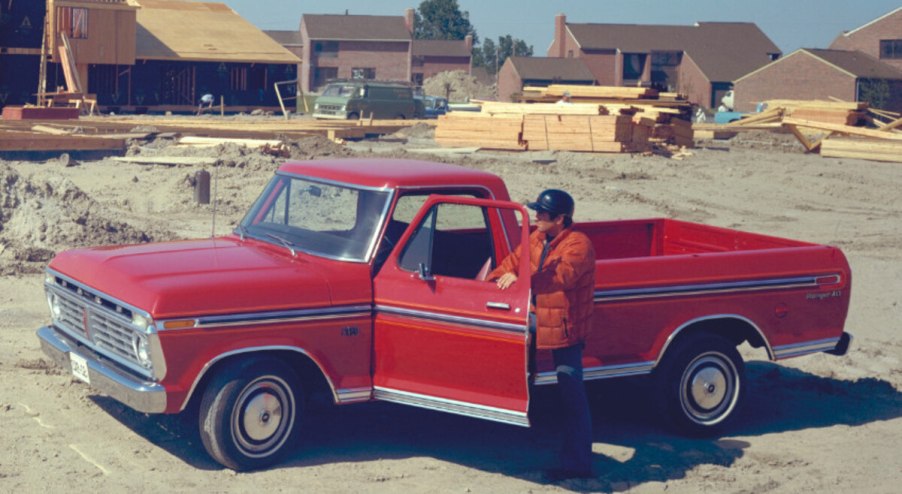
Elon Musk Said the Ford F-150 ‘Is Boring’ We Hate to Agree but He’s Right
The Ford F-150, the most popular vehicle for decades, is a puzzle. It’s the target of all other truckmakers, especially over at Tesla. Yet, according to recent news about the Tesla Cybertruck’s design, CEO Elon Musk wanted it to look nothing like the F-150. “It’s boring,” is what Musk reportedly said. We don’t always agree with his pronouncements, but this time he’s right. Almost every generation has only received minor boring changes.
Every few years, Ford comes out with a new model, but most of the time, it’s hard to tell the difference. And that’s why it is a puzzle. It hardly changes, yet it keeps on selling. Should we assume that Ford doesn’t need to change the F-150’s design, only needing to update technology and add the latest trends in color?
We know that a truck is a truck, and it’s hard to move away from what it is. Its looks are based on function, not style. But the Cybertruck, as polarizing as it is, tests that assumption. The molasses-slow F-150 evolution over many decades is almost too hard to look at, but we’ll show you nonetheless. Do you agree or disagree with Musk?
Can you tell the difference in Ford F-150 generations?
1967 to 1972

We’ll start with the fifth generation, though the fourth was similar. That’s partially because it used the same basic platform as the previous generation. It also started the decades-long front-to-back detail right below the beltline.
1973 to 1979

The sixth generation got square headlights and an “innie” beltline detail rather than the previous generation’s “outie.” It also used basically the same chassis and suspension that first appeared in 1965.
1980 to 1986

Enthusiasts call this generation “bullnose” because of the curved front end. This was the first time in 15 years Ford deemed it necessary to design a new platform. Even the body was all-new though you really have to look hard to tell.
1987 to 1991

For this eighth generation, Ford carried over the cab and most inner structure, focusing on new bed sides and front end. So yeah, it looks very similar to its previous self.
1992 to 1997

Again continuing with the 1980 body, Ford integrated the grille while keeping the innie side detail and undercut in the lower rockers. The hood dropped off a little more to slightly change the F-150’s profile. It also split bed-to-body proportions 50/50.
Ford made a big F-150 change in 1998
1998 to 2004

This is the most radical shift from previous models since smooth-side beds came into use in the late 1950s. Following the “soap bar” design philosophy first seen in the 1992 Ford Taurus, it was a big leap. But to hedge its bets, Ford continued with the older body design for its heavy-duty lines, so this rounder body was only used for the F-150. This was also the first Ford truck to feature independent front suspensions.
2004 to 2008

Moving slightly backward from the jelly bean design, Ford introduced an all-new body and platform. Ford chose to emphasize the wheel openings while toning down the previous generation’s radical design (for Ford, that is). In some ways, it revived details of earlier versions of the F-150.
2009 to 2014

Ford exaggerated its F-150 design with more aggressive details, starting with the grille. But without the grille to guide you, it was hard to tell this was a new design.
Are these last two F-150 designs different enough?
2015 to 2020

Partially due to federal changes to reduce pedestrian injuries, a more upright hood and grille came onto the F-150 scene. This resulted in a profile not unlike the mid-1960s and up F-150s. Ford was squaring up the bodies in a reverse of its soap bar styling of the late-1990s and early 2000s.
2021 to today

Ford said that the all-new 2021 F-150 had 92% of its components redesigned, possibly anticipating backlash for not changing up the new Ford enough. And really, it is hard to tell the 13th generation from the 14th.



